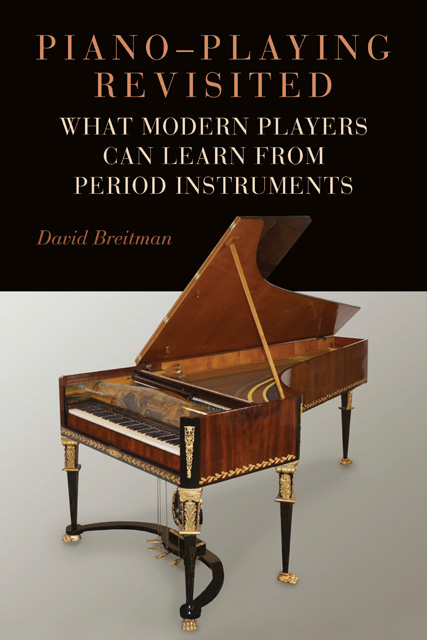Book contents
- Frontmatter
- Dedication
- Contents
- List of Illustrations
- Preface
- Acknowledgments
- 1 Music Making Then and Now
- 2 With Broad Strokes (An Overview)
- 3 The Early Days of the Piano: Haydn and Mozart
- 4 Beethoven and the Evolving Piano
- 5 Schubert
- 6 Chopin
- 7 The Clavichord
- Epilogue: Creativity in the Performance of Old Music
- Appendix: Overtone Structure of the Steinway and Walter, Compared
- Glossary of Terms
- Notes
- Bibliography
- Index of Works
- General Index
3 - The Early Days of the Piano: Haydn and Mozart
Published online by Cambridge University Press: 17 January 2023
- Frontmatter
- Dedication
- Contents
- List of Illustrations
- Preface
- Acknowledgments
- 1 Music Making Then and Now
- 2 With Broad Strokes (An Overview)
- 3 The Early Days of the Piano: Haydn and Mozart
- 4 Beethoven and the Evolving Piano
- 5 Schubert
- 6 Chopin
- 7 The Clavichord
- Epilogue: Creativity in the Performance of Old Music
- Appendix: Overtone Structure of the Steinway and Walter, Compared
- Glossary of Terms
- Notes
- Bibliography
- Index of Works
- General Index
Summary
From Multiple, Interchangeable Keyboards to the Piano
When C. P. E. Bach published his Essay on the True Art of Playing Keyboard Instruments in 1753, the piano merited little attention. Although Cristofori had built his first one more than fifty years earlier, here’s what the authoritative Bach thought a player needed to know about it:
Of the many kinds [of keyboard instrument], some of which remain little known because of defects, others because they are not yet in general use, there are two which have been most widely acclaimed, the harpsichord and the clavichord… . The more recent pianoforte, when it is sturdy and well built, has many fine qualities, although its touch must be carefully worked out, a task which is not without difficulties.
He then offers the following advice:
Every good keyboardist should own a good harpsichord and a good clavichord to enable him to play all things interchangeably. A good clavichordist makes an accomplished harpsichordist, but not the reverse. The clavichord is needed for the study of good performance, and the harpsichord to develop proper finger strength.
This was precisely the situation in the Mozart home when Wolfgang and his sister Nannerl, also a talented keyboard player, were growing up in the 1760s. The family owned a five-octave, two-manual harpsichord by Friederici and a five-octave clavichord; a small travel clavichord by Stein was acquired for the extensive tours of 1763–66.Eventually, the piano became Wolfgang’s primary instrument. In a letter from 1777, his mother wrote from Mannheim to her husband at home in Salzburg: “Indeed [Wolfgang] plays quite differently from how he used to in Salzburg, for there are pianos here, on which he plays so extraordinarily well that people say they have never heard anything like it …”
Two years earlier, in 1775, an anonymous reviewer was less impressed:
In Munich last winter I heard two of the greatest clavier players, Herr Mozart and Captain von Beecke; my host, Herr Albert … has an excellent fortepiano in his house … Mozart’s playing had great weight, and he read at sight everything that was put before him. But no more than that: Beecke surpasses him by a long way. Winged agility, grace [and] melting sweetness [characterized his playing].
- Type
- Chapter
- Information
- Piano-Playing RevisitedWhat Modern Players Can Learn from Period Instruments, pp. 24 - 64Publisher: Boydell & BrewerPrint publication year: 2021

